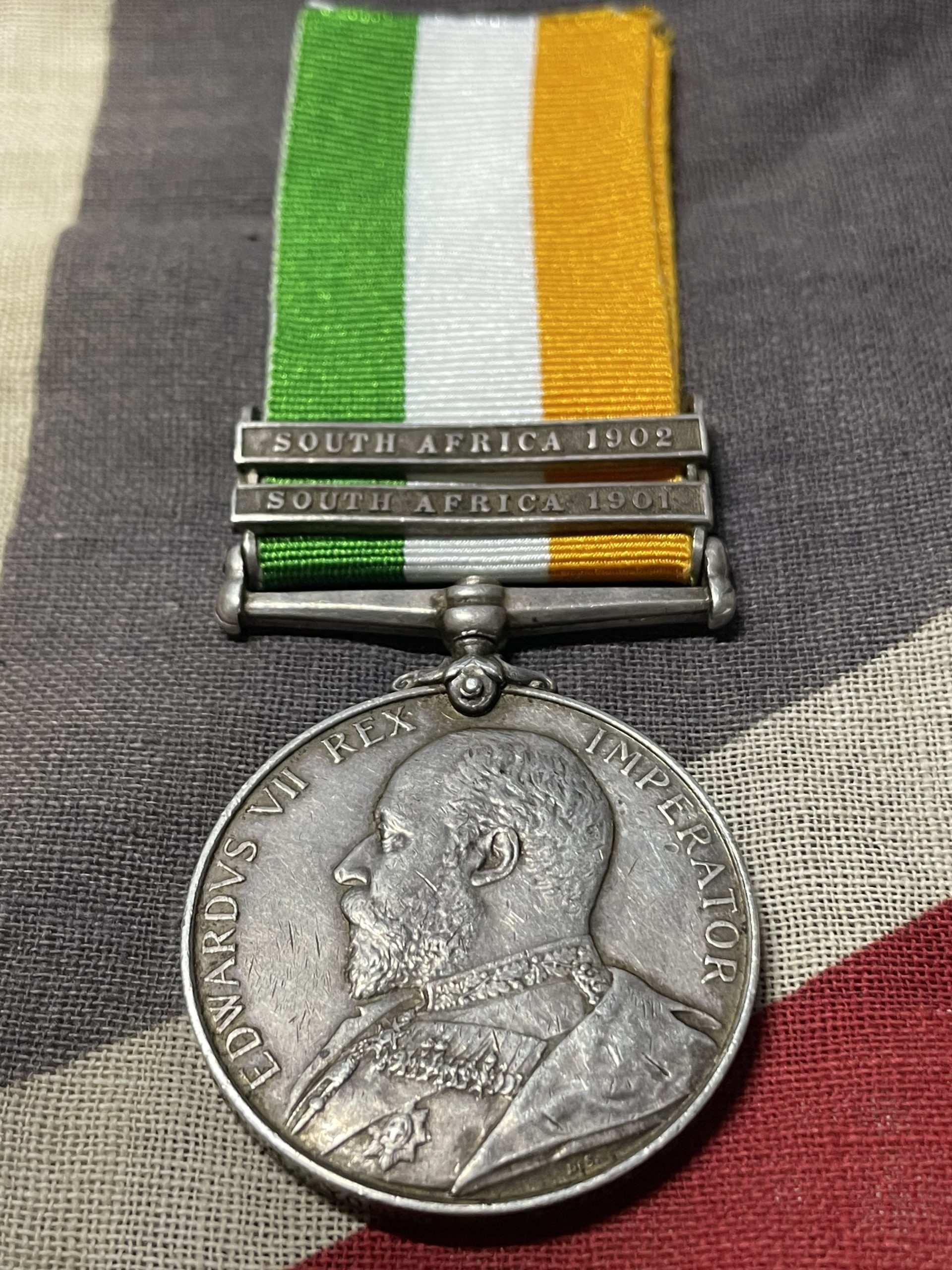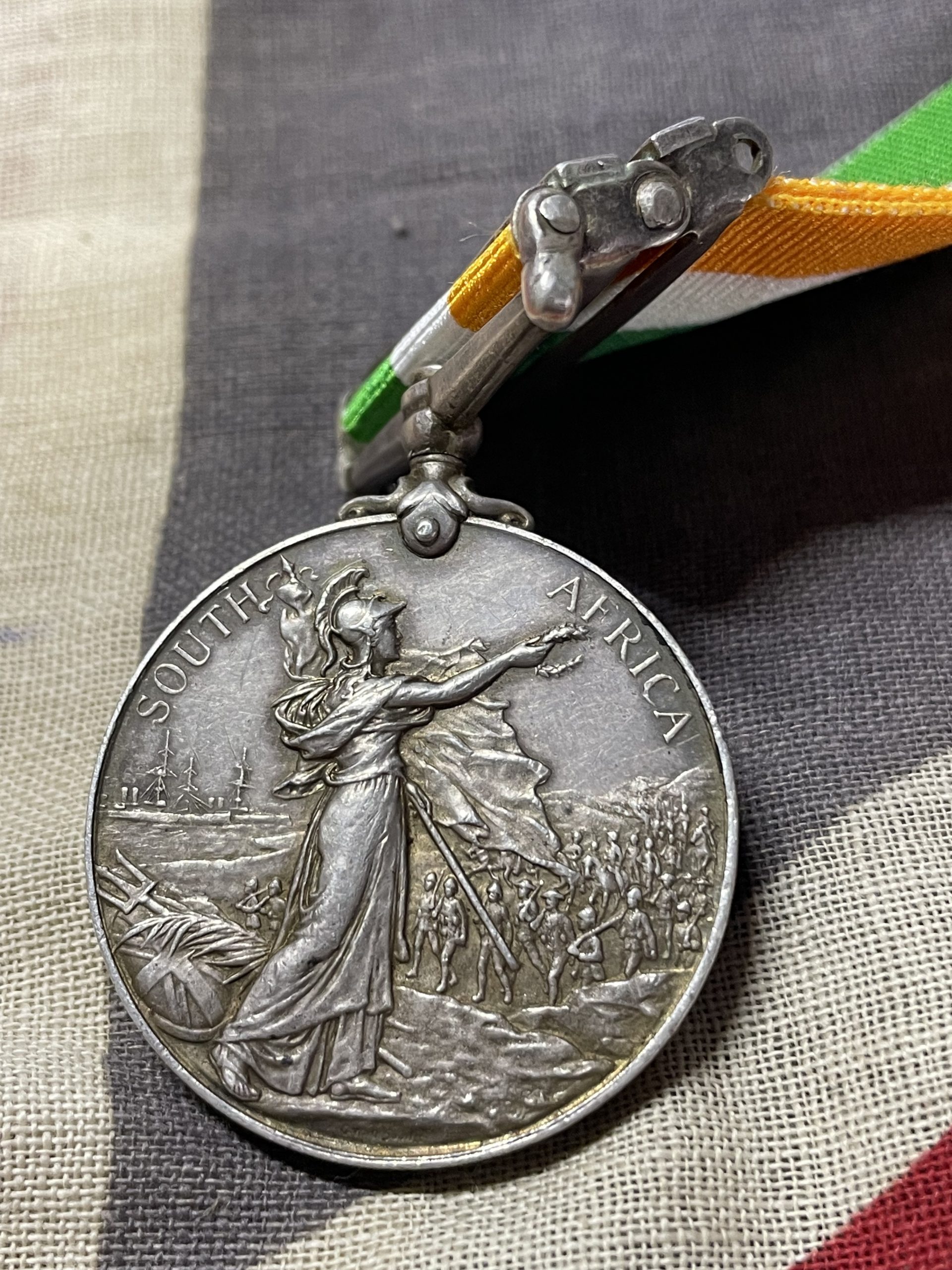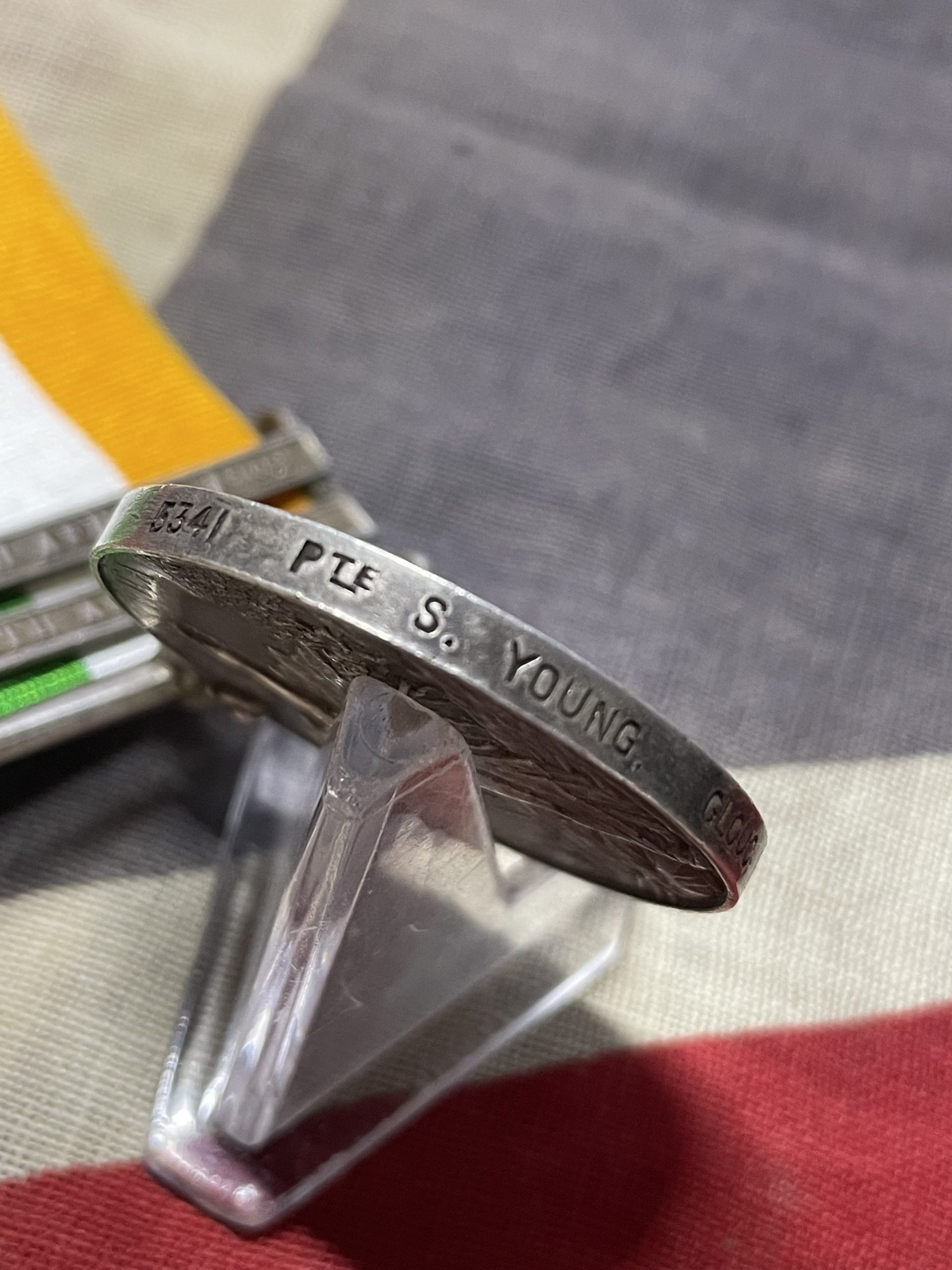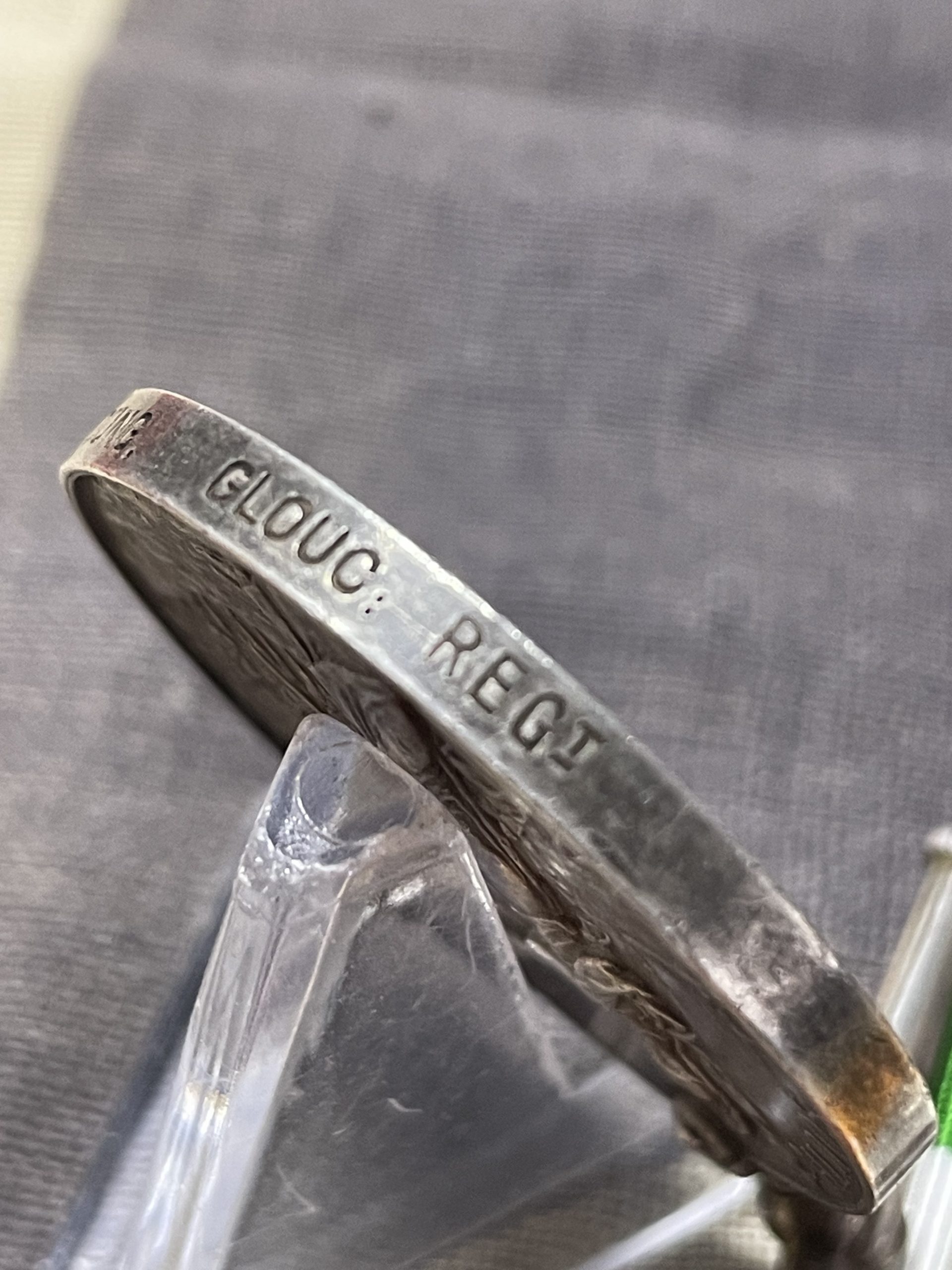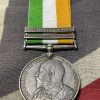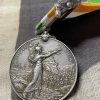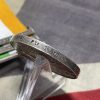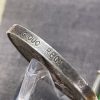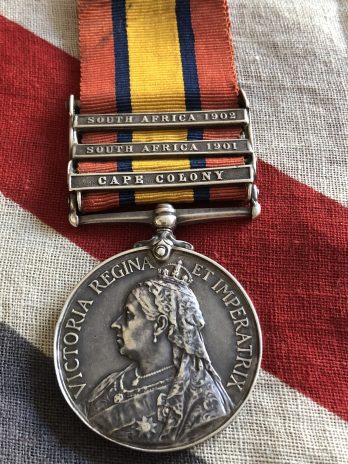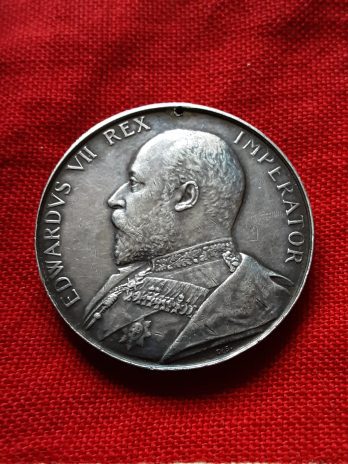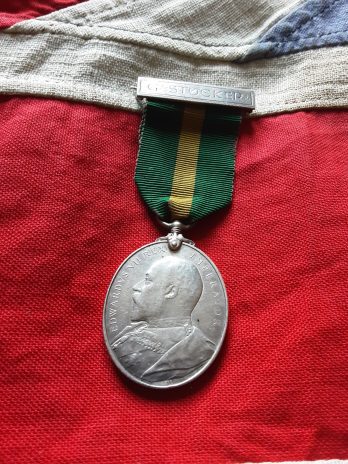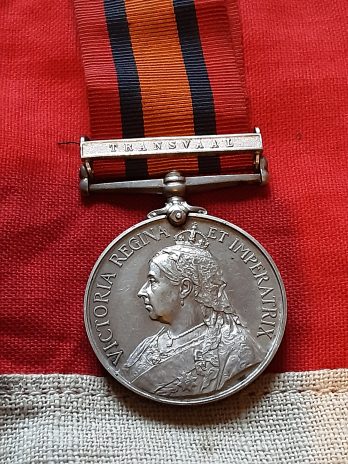Correctly named 5341 Pte S Young Glouc Regt
Born in St Peters, Cheltenham in 1880, Sydney Charles attested to the 2nd Bn Gloucester Regiment in June 1898. He was a printer in civilian life.
He served in South Africa from June 1900 until November 1902 and is also entitled to the Queens South Africa Medal with Transvaal and Cape Colony clasps.
In the summer of 1899, the 2nd Battalion was stationed at Aldershot and was commanded by Lt Col Lindsell. They sailed on the Cymric on 1st January 1900, and arrived at Cape Town on the 21st. Along with the 2nd East Kent Regiment, 1st West Riding Regiment, and 1st Oxford Light Infantry, they formed the 13th Brigade under Brigadier General C E Knox, and part of the VIth Division under Lieutenant General Kelly-Kenny.
The whole division did splendid work in the advance from Modder River to Bloemfontein. At Klip Kraal the East Kent, Gloucesters, and Oxford Light Infantry had sharp fighting with Cronje’s rear-guard. On the 18th at Paardeberg the Gloucesters were not so seriously engaged as many other battalions, but between the 18th and 28th they did good work in seizing positions of importance, and driving back the Boer reinforcements. Their losses were about 6 killed and 20 wounded, including Colonel Lindsell.
The correspondent of the Press Association, whose work was generally very reliable, telegraphing from Paardeberg on 26th February said: “Last Monday night (19th) a brilliant piece of work was performed by the Gloucesters. During the afternoon they approached within a short distance of a Boer kopje and contained the enemy until nightfall, when 120 men charged the kopje with bayonets and drove off the Boers with loss, bayoneting several”. On 28th February Lord Roberts wired: “Cronje with his family left here yesterday in charge of Major General Prettyman, and under an escort of the City Imperial Volunteers’ Mounted Infantry. Later in the day the remaining prisoners left under the charge of the Earl of Errol, and escorted by the Gloucester Regiment and 100 City Imperial Volunteers”. The Gloucesters soon rejoined the main army to take part in some further hard marching and fighting.
At Driefontein on 10th March 1900 the 13th Brigade had the toughest of the work, and although the Gloucesters were not in the original first line, they did their part splendidly, and had again about 5 killed and 20 wounded.
Three officers were mentioned in Lord Roberts’ dispatch of 31st March 1900.
On 22nd November 1900, when De Wet made his famous rush south, he snapped up on his way the garrison of Dewetsdorp, consisting of three companies of the 2nd Gloucesters, one company of the Highland Light Infantry, and some of the 2nd Royal Irish Rifles, so that both battalions of the regiment have had the nasty experience of losing a large proportion of their men in surrenders.
Three men of the battalion were mentioned in Lord Kitchener’s dispatch of 8th March 1901, presumably for gallantry at Dewetsdorp.
In 1901 the battalion furnished about three companies as the infantry of a column which operated in the Orange River Colony under Colonel Henry.
The Mounted Infantry company of the battalion saw a good deal of fighting, and gained several “mentions”. In the final dispatch of Lord Kitchener 4 officers and 6 non-commissioned officers of the battalion were mentioned.
As to mentions by Lord Roberts, reference is made to the notes under the 1st Battalion.
In November 1902, he was posted to India until January 1906 where he served with garrison duties.
In 1906 he transferred to the Army Reserve.
He was returned to service for action in WWI and served as Acting Sergeant with the 3rd Reserve Battalion. His service number was now 31342. He is entitled to a WWI Pair also.
The medal has a modern replacement ribbon.
Related products
-
Pre WWI
Edward VII. Territorial Force Efficiency Medal. No 48 Farrier Serjeant G Stocker. 2nd London Brigade. Royal Field Artillery.
£145.00Original price was: £145.00.£130.00Current price is: £130.00. Add to basket -
Pre WWI
Boer War Queens South Africa Medal. Johnstone. South African Constabulary.
£120.00Original price was: £120.00.£100.00Current price is: £100.00. Add to basket


